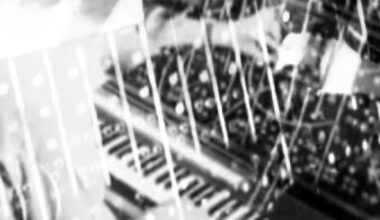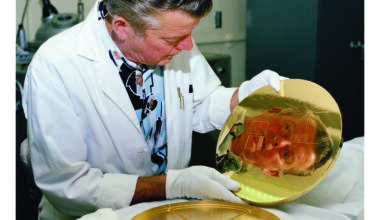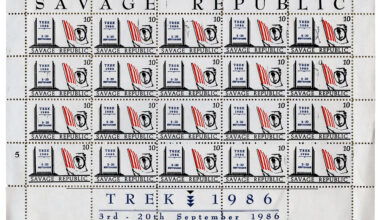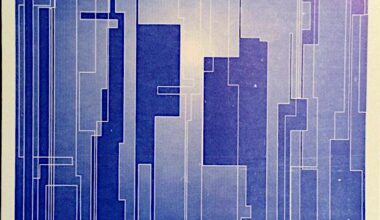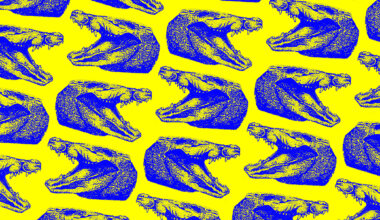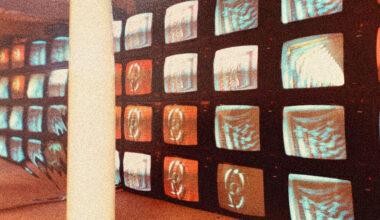We’re rewinding to Summer 1984 and a live New Order session on BBC TV… on a Saturday teatime… What could possibly go wrong?
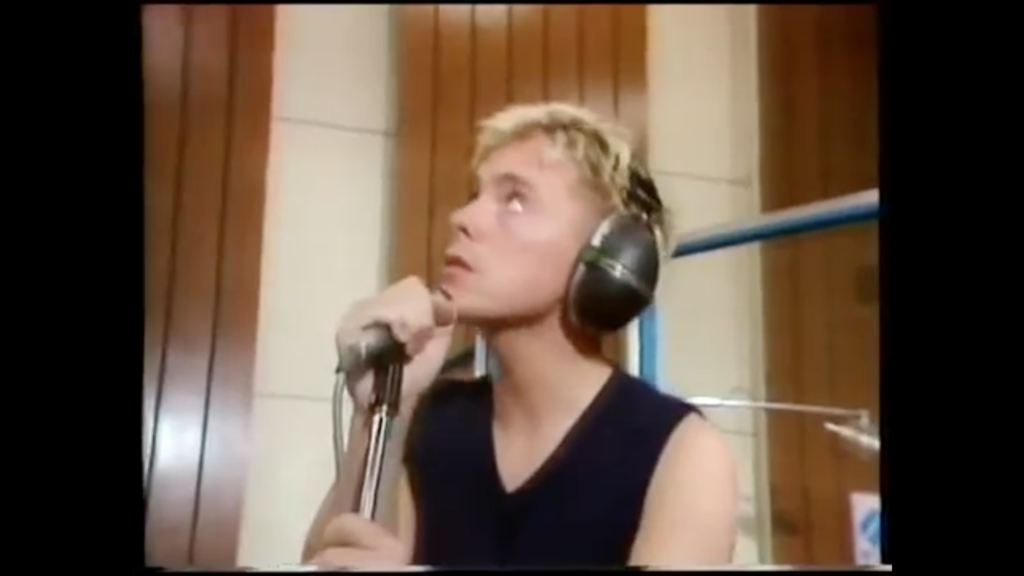
Back in 1984, when Radio 1 was on 275 and 285 in glorious mono on your medium wave, a live radio session was quite the occasion. Getting to actually see your favourite band playing live on the telly? That was a very rare treat.
Always ones to make life more difficult for themselves than strictly necessary, New Order’s chaotic ‘Top Of The Pops’ performances weren’t lost on those of us who appreciated such things. For the rest, those appearances ensured that, without fail, their singles went down the charts the following week instead of up.
So a five-song New Order set broadcast live to the nation was always going to be something to behold. The session, on Saturday 25 August 1984 in a cramped studio in the basement of Broadcasting House, was simultaneously broadcast on Radio 1’s ‘Saturday Live’ and on BBC2 as part of marathon fundraising telethon “Rock Around The Clock”. It was produced by Mark Radcliffe, the 6 Music and Radio 2 DJ, who cut his teeth as a BBC producer in the 1980s.
“I don’t remember all that much about it,” says Radcliffe. “It was booked as a radio session for ‘Saturday Live’ presented by Richard Skinner and Andy Batten-Foster, and TV jumped on the back of it.”
At this point New Order were very much on the up. They’d scorched the charts with ‘Blue Monday’, a Top 10 hit in March 1983, and were all set to release of their third album, ‘Low-Life’, the following spring.
“I do recall that the band were really late,” says Radcliffe. “Except for Peter Hook who came with the crew and helped unload the gear.”
Anyone who’s read ‘Unknown Pleasures’, Hooky’s fine account of the Joy Division years, will know of his dual role as bass player/roadie and how he kept the show, single-handedly at times, on the road.
“The BBC were going mental,” says Hook. “We had to try and set it all up to go live, literally, in minutes. Nothing was working. It was all completely fucked.”
“It was awful, a total fuck up,” Bernard Sumner told Bill Black in an interview for the weekly music paper Sounds a couple of weeks after the broadcast. “We’d played in Cornwall the night before and during the day we got stuck in traffic for two hours, which meant we had to drive at 120 miles an hour for the last three hours and then we got there only 25 minutes before the programme went out.”
There was very little rehearsal or soundcheck,” recalls Radcliffe, “and I do remember it being quite tense.”
Not that you’d have known any of this if you were listening to the radio. It sounded great, typical seat-of-the-pants New Order live stuff. Mistakes? Sure, but that was part of their charm. Watching the TV version was a different ball game. Tense doesn’t even begin to cut it.
The band are alone in the sparsest of spaces deep in the bowels of Broadcasting House. The only clue to their whereabouts is a small Radio 1 poster on the wall behind them. There’s no audience, no atmosphere, no nothing – just the band, a ton of kit and some worried looking faces behind the glass of the control room.
Bernard Sumner, resplendent in small white shorts, white ankle socks and deck shoes, spends the entire set on the edge of exploding. It all starts well enough with a cracking version of ‘Sooner Than You Think’, but Sumner struggles with an ill-fitting shield on his microphone, and he eventually loses patience with it, yanking it off the mic and unceremoniously tossing it across the room. He then fluffs the intro to ‘Age Of Consent’, which prompts Hooky to ask the engineer to “turn down his guitar a little bit”. You can feel the stress levels rising.
“I just wanted to get it over with,” Sumner said in the Sounds interview. “I wanted to do it the best we possibly could and that was the best we could have done under the circumstances.”
‘Blue Monday’ is a cracking electro-tinged version with much more of a spring in its step than the single version, it even gets a light lyrical rewrite. “Still find it so hard to stay in tune with you,” he spits, “but I’m quite sure that you’ll tell me, what the FUCK we should do.” And all at teatime. On the jolly old BBC.
Next up is ‘In A Lonely Place’, which Sumner describes as “an atmospheric song in an unatmospheric place”, pointing to part of the reason tempers were fraying.
“A lot of bands are trained to be professionals and they’d have done a thing like that and still played it note perfect despite all the hassles,” he told Sounds. “But we’re a product of whatever atmosphere we have around us. If there’s no atmosphere then our music will sound shitty because the feel will be all wrong.”
During the song itself the temperature rises another notch with Sumner becoming increasingly agitated with drummer Stephen Morris. “Speed up a little bit Steve, it’s a little bit faster than this,” he implores and then, a minute later, “faster!” and seconds later… “FASTER!”. By now, Morris is battering his way through the fastest version of the song you’ll ever hear. Hooky and Gillian Gilbert meanwhile, cool as cucumbers throughout the entire set, barely bat an eyelid between them at the ongoing carnage.
And yet despite the countless problems, it’s one of the classic New Order live sets. Closer ‘Temptation’ is a total blast, with Sumner getting in his second F-word of the evening, singing “Oh, it’s the last time, yes, it is the last FUCKING time” while Hooky manages to slip in a bit of Motown with a lick from The Tempatations’ ‘My Girl’ right at the very end. Throughout the song, Sumner is moments from blowing his top, furiously gesticulating at the control room and ripping off his headphones as the soundmen battle to get the mix right in his cans.
“The whole thing was daft,” Sumner declared to Sounds. “We had four synthesisers, an Emulator, guitar, bass, electronic drums, drum machine, acoustic drums and vocals and trying to put that lot through a pair of headphones with two-inch speakers really is completely and utterly stupid.”
“I mean, we looked a right bunch of cunts,” says Hook, “but you know, in a funny way, it all added to your allure. It added to your punkiness, your anarchic attitude. To my mind, it made us special. A normal band, at that stage of their career, would have been there for 8 o’clock in the morning, but we didn’t give a monkey’s. In a way, you wore it like a badge of honour.”
